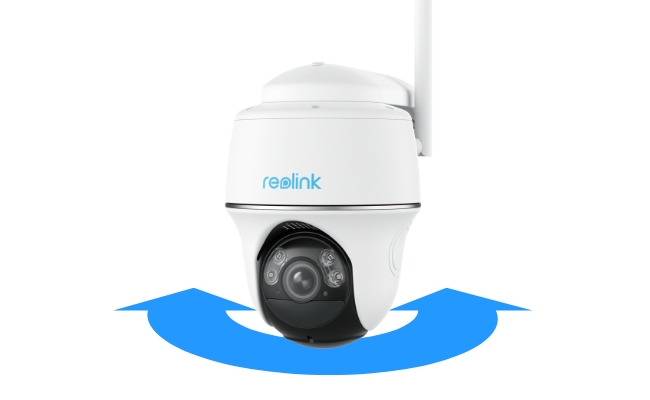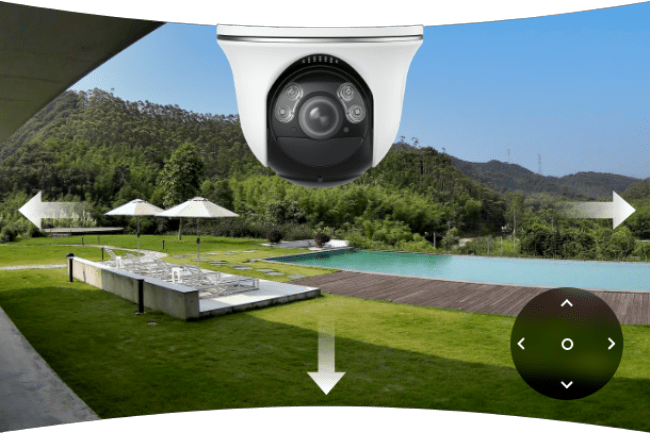What is Camera Pan? Camera Movements Explained

Camera movements are an important category of cinematic tools, which enable the director to guide the audience through scenes and provide them with the information needed. Among all the movements that are possible to make with the camera, one of the most frequent and helpful is pan.
In this article, we will explain what pan camera movement is, how the technique is employed, when it is useful to apply it, and how security camera pan works. Camera tracking is the process of moving the camera from one object to another horizontally, within a shot.
Camera Panning Meaning
What's pan the camera meaning? The pan camera itself can even move horizontally 360 degrees or change the angle vertically to capture the scene. It can be used to change the view while the camera stays in one position, thus helping the cinematographer to achieve subtle changes.
While tilting physically involves changing the position of the camera to another position, camera movement pan is a way of moving through the visual space though the vantage position remains the same.
How Does Pan Camera Movement Work?
To successfully execute a smooth pan, the camera operator must first secure the camera on a sturdy tripod or dolly. This provides a fixed pivot point and prevents unwanted shake or vibration during the pan.
The tripod head must have a fluid pan function that allows the camera to swivel horizontally with adjustable resistance. This makes it possible to pan slowly for dramatic effect or quickly when tracking fast motion.
The camera operator first frames up the initial starting position for the shot. They may use guides like vertical tape marks on walls to align the endpoint position. When ready to move the PTZ camera, the pan lock is released, and the camera is carefully rotated left or right.
How to Do a Camera Pan Shot in Film and Why?
Pan shots are widely used in film and videography. Here's how to capture the best panning shots.
How to Pan the Camera While Filming
Capturing a smooth, effective pan shot while filming requires careful technique and practice. Here are some key tips for achieving seamless panning:
- Set up the camera on a sturdy tripod and ensure it is perfectly level. This prevents unwanted shake during the pan.
- Position the fluid head to allow a full range of motion for the desired pan.
- Frame up the initial starting point for the pan and lock the camera in place. Use guides like vertical tape marks to align the endpoint.
- When ready to move, release the pan lock and gently rotate the camera horizontally to the end framing.
- Time the speed of the pan to match the motion and action in the scene. Move slowly to start and end the pan.
- Pay attention to maintaining consistent speed and motion. Avoid jerky stops and starts during the pan.
- Allow the camera to gently accelerate to a steady pan speed, then smoothly decelerate at the end.
With preparation and technique, filmmakers can execute elegant horizontal camera pans to tell compelling visual stories.
Why Use Camera Panning Movement in Movies?
Skillful use of panning provides rich visual storytelling and engages the audience in the cinematic world. The technique offers diverse narrative functions for films across genres. Camera panning serves several important narrative functions in films:
- Reveal spatial details - Panning slowly explores the environment and provides visual exposition. The audience understands the layout and geography.
- Follow subject movement - Panning keeps a character or vehicle framed in shot as they move through the scene.
- Build suspense - A creeping pan in a horror movie builds anticipation before revealing something.
- Shift perspectives - Quick pans disorient the viewer then land on a new scene or location.
- Establish connections - Panning can link characters spatially to show relationships and power dynamics.
- Emphasize motion - Panning creates kinetic momentum and implies progress through the narrative.
- Transition scenes - A fast pan provides a seamless transition between different shots and sequences.
Camera Pan vs. Tilt: What's the Difference?
While panning refers to swiveling the camera horizontally left or right, tilting indicates pivoting the camera vertically up or down. These are two distinct pan tilt camera movements that serve different purposes for the filmmaker.
Panning has a greater kinetic motion because the camera moves horizontally across the scene as it films. Since we look horizontally, the panning appears to be more active to our eyes than any other action. Tilting up can make structures and trees look higher, while tilting down can move from a building or a tree to something on the ground.
One of the most regularly used techniques is panning, which is normally applied to keep the view of moving characters or vehicles in the scene. The camera turns to help follow the amount of movement in the lateral direction. On the other hand, tilting does not follow the horizontal motion because the camera turns around the vertical axis only.
However, tilting can be applied in order to reveal part of the scene which is beyond the initial shot. For instance, if a shot includes a person’s face, the tilt-up could reveal a figure standing on a balcony.

Pan and Tilt in Security Camera Recommendation
Security camera systems employ pan and tilt mechanisms to provide full coverage of an area with just one camera unit. This allows operators to remotely scan the entire scene and zoom in on details with just subtle joystick movements.
Some pan, tilt, and zoom camera (PTZ) can rotate a full 360 degrees horizontally and tilt 180 degrees vertically. This range of motion enables monitoring activity in all directions from one vantage point.
For homeowners seeking an advanced pan tilt zoom camera control, we recommend the Reolink Argus PT. This 5MP wireless camera delivers crisp 2K+ video with color night vision. The remote pan and tilt functionality provides 355° pan and 140° tilt, allowing the camera to view the entire premises. Powered by a rechargeable battery and solar panel, the Argus PT pan tilt camera can be installed anywhere without wiring.
100% Wire-Free PT Camera
2K+ 5MP Super HD; 5GHz/2.4GHz WiFi; Rechargeable Battery & Solar Powered; 355° Pan & 140° Tilt; IP65 Certified Weatherproof; Color Night Vision; 2-Way Audio; 122° Wide Viewing Angle.
FAQs
What is a pan in a camera?
A pan refers to pivoting the camera horizontally on its vertical axis to shift perspectives laterally and scan the scene left or right. This provides an overall view and reveals spatial details.
What is the difference between zoom and pan?
Zooming uses the lens optics to magnify the image. Panning rotates the physical camera position to shift the view left or right. Zooming adjusts field of view, panning moves the viewpoint.
What are some basic camera movements?
Common camera movements include panning horizontally, tilting vertically, tracking along lateral motion, zooming in/out, craning up/down, and dollying the camera forwards, backwards, or laterally.
Conclusion
Camera panning is one of the most important and widely used techniques in filmmaking. Panning is a slow back-and-forth movement of the camera along its vertical axis to see around the scene, action, or objects, or to switch between scenes. PTZ security cameras thus apply pan/tilt mechanics to scan large regions effectively.
Do you understand camera pan after reading this article? Share your thoughts with us in the comment section below! Let's discuss them together!
Search
Subscribe for the Latest Updates
Security insights & offers right into your inbox





























































































































































